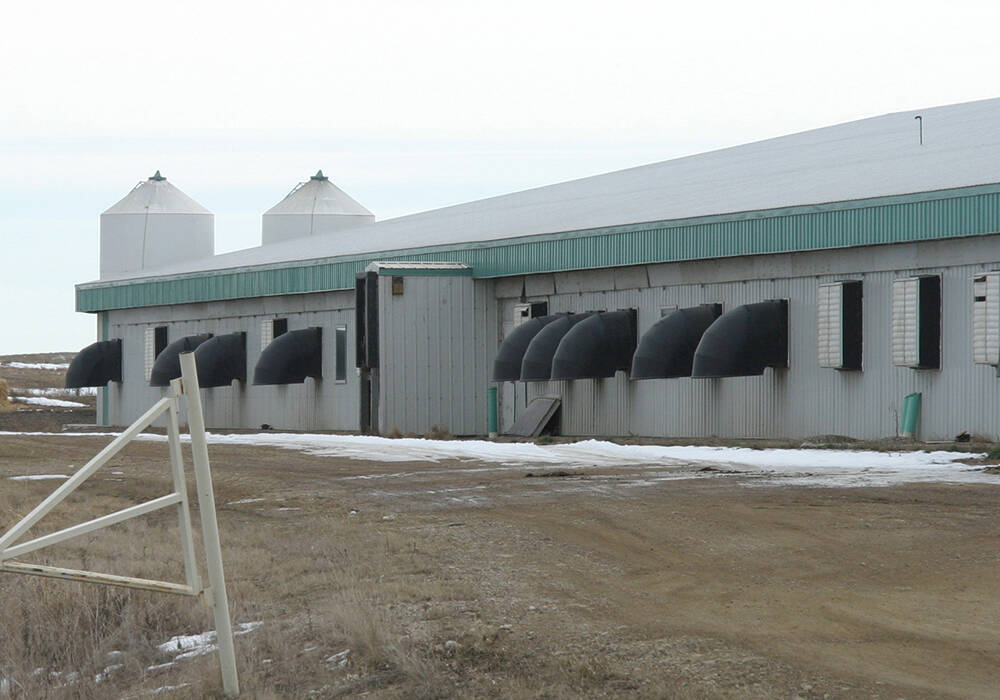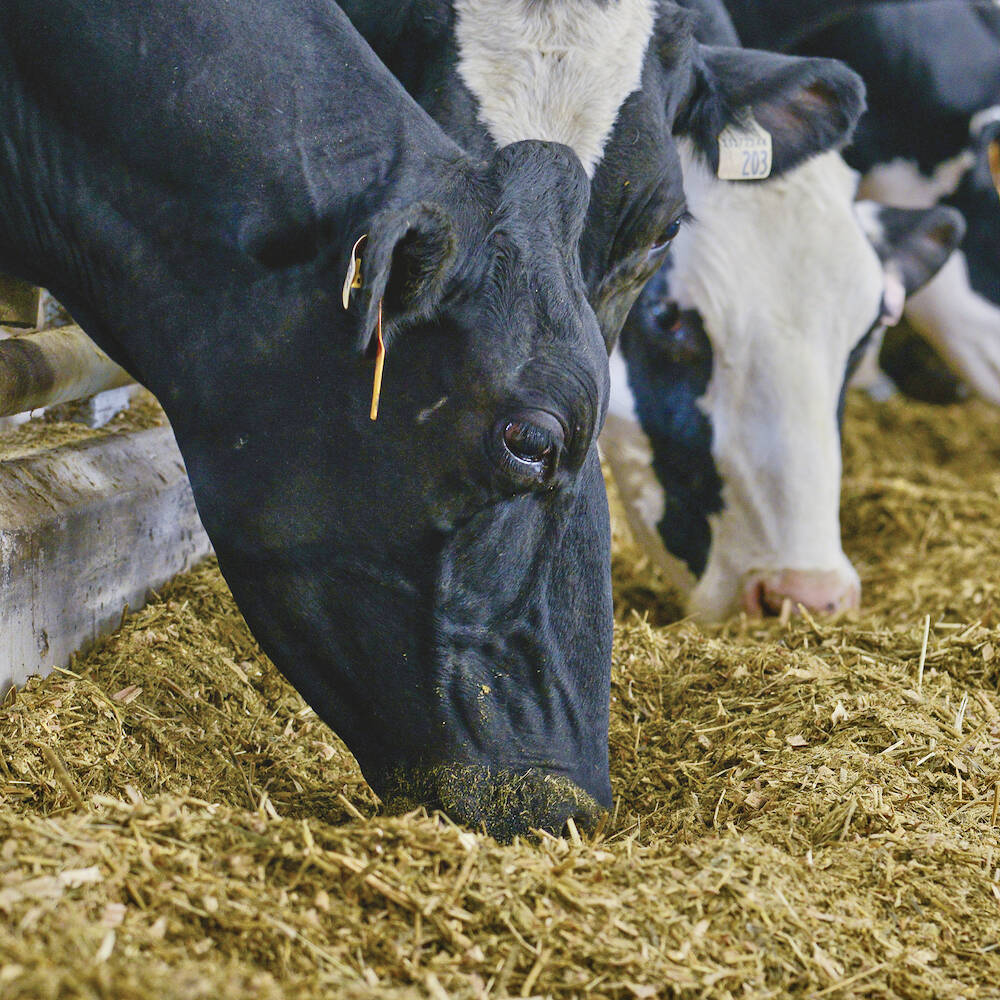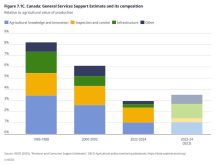Canada’s national dairy group is leaning on the trade shield promised by recently passed legislation, despite recent media reports that suggested Canada may be weighing whether to give ground to the U.S. on dairy access.
In early October, the Globe and Mail reported that the federal government was considering moves that would allow more U.S.-sourced dairy on Canadian grocery shelves. The paper cited unnamed sources close to the issue but who were “not authorized to speak publicly on the matter.”
The Dairy Farmers of Canada (DFC), in an email to the Co-operator, pointed to “commitments previously made by the government and by all parliamentarians.”
Read Also

Get the best air in your hog barn
Farmers who pay more attention to ventilation, humidity, air pressure and temperature in the hog barn can get pigs gaining weight faster and keep them comfortable
WHY IT MATTERS: Supply management, and dairy in particular, has been a prime target for U.S. irritation as trade tensions between Canada and the U.S. continue.
On June 26, Bill C-202 received royal assent and became law in Canada. The bill limited Canada’s ability to make trade concessions on supply managed dairy, poultry and eggs and was the successor to Bill C-282, which died on the floor when Canada’s federal election was called in early 2025. The specific language of the bill curbed Canada’s ability to make trade concessions impacting supply managed industries by increasing TRQs or decreasing tariffs on products that exceed TRQs.
TRQ refers to tariff rate quota, which earmarks certain dairy volumes as able to come into Canada at lower tariff levels.
The bill was welcomed by supply management advocates, but denounced by export-reliant agriculture sectors, who argued that it de-fanged Canada at the negotiating table. Bill C-202 received royal assent on June 26 of this year.
Dairy Farmers of Canada also pointed to the contrasting official word from the federal minister responsible for Canada-U.S. trade.
The Globe and Mail cited comment from a spokesperson of the office of Dominic LeBlanc, which reiterated commitments to protect Canadian industry, said their office had engaged with supply managed industries and stated that “Canada’s supply management system will never be on the table.”
The dairy group noted that specific quote and said that “it remains DFC’s expectation that no further concessions will be made to supply management.”
Point of trade contention
The article further noted that LeBlanc had launched consultations between government representatives and “key players” in Canada’s dairy industry Sept. 19, in advance of 2026’s anticipated review of the Canada-United States-Mexico Agreement (CUSMA).
Neither LeBlanc nor industry sources offered further comment. The two unnamed sources said talks thus far had focused on import restriction changes.

Access to Canadian dairy markets and supply management systems are forecast to be among the CUSMA review’s most heated exchanges, particularly in light of U.S. President Donald Trump’s repeated condemnation of the practice.
TRQs have been a particular sticking point, not only from the Trump administration, but also during the Biden administration, as well as creating tension between Canada and New Zealand. Trading partners have argued that TRQ rights tended to be unfairly reserved for Canadian processors, leaving little room for access.
In 2021, Canada faced a CUSMA complaint over the issue from the U.S., after which it made changes to how TRQs were administered.
The U.S., however, has long pushed for a more open system with more direct importation at the retail level. That less regulated access has been resisted strongly by the Canadian government and supply management advocates, who argue that the current system has been key for providing consistent market conditions and has bolstered the health of sectors like Canadian dairy and poultry.
Letter of the law
Phil Mount wonders if that kind of “direct line” to retail might have a ripple effect that could, in fact, leave room more U.S. milk on Canadian store shelves — while at the same time leaving total TRQ allowance unchanged, and therefore still technically in compliance with supply management law and recently passed anti-concession legislation.
“I could see the negotiators and the federal government making the case that these TRQs have already been agreed to. They’re already in the CUSMA agreement and in other agreements as well,” said the National Farmers Union vice-president for policy.
“And that basically would be how the federal government can say, ‘We’re not in any way going against the legislation that we just passed, or affecting supply management, because the TRQs already are there. We would just be changing how they would be used, where they would be allocated within the system.’”
Mount can see how U.S. companies might use their new status — even if it’s only offered to a handful of U.S.-based big box stores — to normalize the purchase of U.S. dairy among Canadians.
“They could prep for more access and more access and make the case that Canadian consumers have already seen this on their store shelves,” he said. “And that is not a good thing because I think, quite frankly, it would have a huge effect on public trust In this country.”

He also wonders why — from a sales perspective — Canada would consider now a good time to welcome more U.S. dairy products onto retail shelves.
Canadian consumers are already boycotting U.S. goods as a statement against tariffs, he noted.
He also pointed to concern over U.S. cuts to its Food and Drug Administration, meaning “even less oversight in the U.S. of what they’re putting into their products and how they’re being tested,” said Mount.
He also pointed to the ongoing use of bovine growth hormones by some U.S. dairy farmers that are not allowed in Canada.
“When I talk, especially with young folks, the main reason why they remain supportive of supply management is that they have a mistrust of what is in U.S. milk,” he said.
“I think we can’t overstate the potential impact on public trust … of shifting a larger allocation to the retail sector.”
















